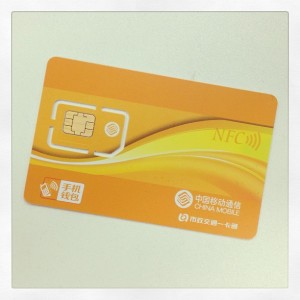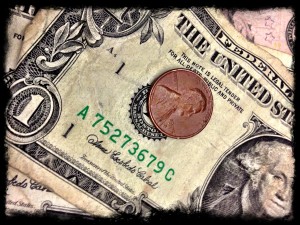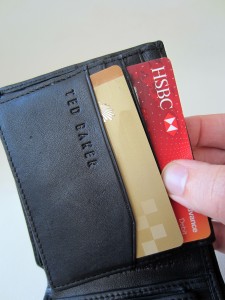
July 11th, 2016 by Elma Jane
Facebook announcement of News Feed algorithm shift will affect how businesses use this platform. Content posted by brands and publishers will show up less prominent in News Feeds.
This Facebook update may cause reach and referral traffic to decline for many Pages who’s traffic comes directly through Page posts. To limit the impact of this change Boost Engagement is the key, individual users commenting, liking and sharing on business posts will help circumnavigate the new algorithm. Diversify your referral traffic sources. Look for alternative social media platforms, pay per click ads or blogs to make up for the loss in referrals and increase your reach.
To limit the impact of this change, Boost Engagement is the key. Individual users commenting, liking and sharing on business posts will help circumnavigate the new algorithm. Diversify your referral traffic sources. Look for alternative social media platforms, pay per click ads or blogs to make up for the loss in referrals and increase your reach.
Diversify your referral traffic sources. Look for alternative social media platforms, pay per click ads or blogs to make up for the loss in referrals and increase your reach.
While this change will have an impact on big businesses that rely on Facebook for their referral traffic and content sharing, small businesses will still feel the change. By boosting your engagement and diversifying your referral traffic sources, you can lessen the impact to your business.
Posted in Best Practices for Merchants Tagged with: business, pay, platform, referral, social media, traffic
November 22nd, 2013 by Admin
As we move to smartphones and tablets as payment methods security and privacy concerns are a real issue. With recent NSA leaks shedding light on our data and the access others have to it, we have to consider security, privacy and health implications. This year alone e-commerce transactions on smartphones and tablets during the holiday season are set to grow by 15%. Although tablets, not smartphones will drive the bulk of that growth, smartphones are set to overtake mobile-commerce payments over the next 5 years. Tablet payments in the U.S. alone are expecting to reach $26 billion in transactions. Currently tablets are more convenient for m-commerce due to their size, but as far as the future of electronic payment processing, smartphones are where it’s at.
The smart merchant sees this coming and realizes frictionless transactions increase sales. The more comfortable and less complicated a transaction is for a customer, the better. Smartphones, tablets, PCs, laptops and more can already process electronic transactions from credit and debit cards, gift cards, electronic checks and more. Money movement is easier than ever and more convenient than cash. Cash is king however in situations where internet connectivity and power are an issue. In India for example, a poor electric grid makes power outages a common occurrence. During natural disasters, when resources are badly needed, power outages or severed internet communications mean no electronic transactions can be processed. So physical currency remains a must, in the future we may see payment technology evolve to where digital money like crypto currency (BitCoin) may be stored on the device itself similar to having cash. As these electronic payment systems evolve, merchants need to position themselves to accept what their market prefers to transact with.
The smart citizen also sees this coming and has concerns that things like a National ID program being established may compromise their privacy.
As an extreme example of electronic transactions, a nightclub in Spain used subdermally implanted RFID chips in a woman that allowed patrons to pay for food and beverages without a credit card.
Posted in e-commerce & m-commerce, Electronic Check Services, Electronic Payments, Gift & Loyalty Card Processing, Merchant Services Account, Near Field Communication, Smartphone Tagged with: bitcoin, cash, connectivity, credit, crypto currency, currency, debit cards, digital money, e-commerce, electronic, electronic checks, frictionless, Gift Cards, health, internet, laptops, leaks, m-commerce, Merchant's, mobile-commerce payments, money, national id, nsa, pay, payment methods, payment processing, PCs, privacy, processed, RFID, Security, smartphone, tablets, technology, transact, transactions
November 14th, 2013 by Elma Jane
Micropayments provide faster results and some immediate gratification that can keep you motivated. Rather than eating out or splurging on something that you don’t really need, immediately apply that money to pay down your credit card balance. Instead of paying a certain amount once a month, divide that payment in half and pay that amount every two weeks. Consumers can even sign up for an electronic transfer of your funds to take place every two weeks. By the end of the year, you will have made 26 payments or the equivalent of 13 monthly payments. The extra monthly payment resulting from this payment plan will enable you to pay down your debt at a faster pace.
If you are planning to make micropayments, consumers may want to call their credit card company to verify that separate payments can be made and will be credited to their monthly minimum. See if your issuer has any restrictions or limitations on making additional payments.
Holiday shopping is just around the corner, and consumers need to have their credit card balances as low as possible in order to avoid costly interest charges. One way to do this is to make micropayments on their credit card bill. While we are conditioned to pay our credit card bill once a month, consumers can actually make a number of smaller payments throughout the month. Some banks and issuers allow payments to be made as often as once a day. If you carry a balance, micropayments can reduce the interest because most credit card companies charge interest based on your average daily balance during the month. Pay more often and you reduce your average daily balance and therefore the interest you pay that month.
If you have more than one card with a balance, keep paying the minimums for each card, but pick one card to pay off first. Select either the card with the highest interest rate (save more money) or the card with the lowest balance (pay it off faster). Stop charging on that card, using another card for purchases.
There are several other advantages to making micropayments when paying down credit card debt:
You may have better control of your payments. If you are paid weekly or bi-weekly, money can slip away by the end of the month. Designate a specific day after you are paid to send in a payment for your credit card. Four $50 payments or two $100 payments are sometimes easier to make than a monthly $200 payment. It is also easier to add a little extra money to smaller payments.
In time, micropayments can help raise your credit score. An organized, scheduled payment plan can help you avoid late payments and pay more than the minimum due. Both of these are important elements for a good credit score.
Micropayments can reduce financial stress. Making payments right after payday at a time when you actually have the money will likely reduce anxiety and financial stress.
The higher your interest rate, the more you will save.
The disadvantage to the micropayment plan is that it takes time, organization and financial discipline to make the plan work and this may be difficult for some people.
Posted in Electronic Payments, Financial Services, Visa MasterCard American Express Tagged with: balance, bill, consumers, credit-card, credited, debt, elements, financial, interest, issuers, limitations, micropayments, money, monthly minimum, pay, payments, purchases, shopping
November 8th, 2013 by Elma Jane
If you want to make the most out of your shopping adventures, you need to have a credit card that helps you save money. The question is, which option is better for you? Some people automatically think about store credit cards, and others go for cash back credit cards. Before you apply for a card, assess which type of card would be more beneficial for your personal needs.
Cash Back Credit Cards
The main perk to having a cash back credit card is the fact that you can use it anywhere. It still acts as a traditional credit card. The only difference is that you get rewards from the money you spend on it. The average cash back credit card offers 1% cash back on all purchases. Some may also pay an additional 2% to 5% cash back on select purchases made with the card. Example, the Citi ThankYou Preferred Card offers 2 reward points per $1 spent on dining and entertainment. Blue Cash Everyday card from American Express offers 3% cash back at supermarkets, 2% cash back at gas stations and 1% on all other purchases. You could earn a great deal of your money if you choose the right cash back card and use it correctly.
The problem with cash back credit cards is that the rewards structure can sometimes be confusing. The Discover It Card features an attractive rewards program, but its 5% cash back offer changes every three months. It may be on home improvement purchases during one quarter, but during another quarter, it may be applicable on purchases at gas stations and for holiday shopping. You have to keep up with the rewards calendar to get the most out of your credit card. You also have to consider any fees associated with your credit card. Some cash back cards on the market have an annual fee, and many have a slightly higher interest rate than the average card. Review the terms of any card you are considering for so you can pick the perfect one for you.
Store Credit Cards
Store credit cards are usually easy to apply for and just as easy to obtain. Some of them can be used like regular credit cards, and others have to be used at a specific store. For instance, the traditional Walmart credit card can only be used at Walmart, but the Walmart Discover card can be used anywhere Discover is accepted. You need to know this about your card before applying for it. Many people get a store credit card because they receive some type of introductory offer when they apply for one. You might be able to save 10-15% off your initial purchase, or you might get a certain amount of cash back after making your first purchase. These offers are designed to lure you into getting a card, even though you may never use it again. What you may not realize in the euphoria of the introductory offer is the very high interest rate you typically have on a store credit card.
When you start looking at store credit cards, consider what kind of rewards you can get and how those rewards are accumulated. Do they only come from purchases at that store, or do they come from any transaction? Are you required to use rewards in the store, or can you use them online? Does the card have an annual fee? You must go through this type of analysis before deciding if a store credit card is worth getting.
Are Cash Back Credit Cards Better Than Store Credit Cards?
In our opinion, yes. This isn’t because we’re biased towards cash back cards. We just like the idea that you can earn rewards wherever you make a transaction. You aren’t limited to one store, either in the way you spend money or the way you collect your rewards. In addition, store cards usually have a higher interest rate. With that said, there are people who benefit from store credit cards because they shop at those stores all the time. If you spend thousands of dollars a year at Lowe’s for your construction company, a Lowe’s credit card may provide substantial savings for your business.
Don’t get overly excited when you reach the checkout counter. That one-time savings on a store credit card may not be worth it in the end. Think over your shopping habits and see if a cash back credit card is more suited for your needs. If so, you have plenty of them to choose from.
Posted in Electronic Payments, Financial Services, Gift & Loyalty Card Processing, Visa MasterCard American Express Tagged with: %, accumulated, American Express, annual, assesses, average, beneficial, calendar, cash, cash back, checkout, credit cards, dining, Discover, earn, entertainment, fee, improvement, interest, lowe's, market, money, online, pay, points, preferred, purchases, quarter, rate, rewards, savings, shopping, store, traditional, transaction, walmart
October 10th, 2013 by Elma Jane
Merchant Cash Advance was originally structured as a lump sum payment to a business in exchange for an agreed upon percentage of future credit card and/or debit card sales.
Notion Merchant Cash Advance companies provide funds to businesses in exchange for a percentage of the businesses daily credit card income, directly from the processor that clears and settles the credit card payment. A company’s remittances are drawn from customers’ debit- and credit-card purchases on a daily basis until the obligation has been met. Most providers form partnerships with card-payment processors and take payments directly from a business owner’s card-swipe terminal.These Merchant Cash Advances are not loans – they are a sale of a portion of future credit and/or debit card sales. Therefore merchant cash advance companies claim that they are not bound by state usury laws which limit lenders from charging excessive interest rates. This technicality allows them to operate in a largely unregulated market and charge much higher interest rates than banks. This structure has some advantages over the structure of a conventional loan. Most importantly, payments to the merchant cash advance company fluctuate directly with the merchant’s sales volumes, giving the merchant greater flexibility with which to manage their cash flow, particularly during a slow season. Advances are processed quicker than a typical loan, giving borrowers quicker access to capital. Also, because MCA providers typically give more weight to the underlying performance of a business than the owner’s personal credit scores, Merchant Cash Advances offer an alternative to businesses who may not qualify for a conventional loan.
Usage Merchant cash advances are most often used by retail businesses that do not qualify for regular bank loans, and are generally more expensive than bank loans. Competition and innovation led to downward pressure on rates and terms are now more closely correlated with an applicant’s FICO score.
Generally there are three different types of repayment methods for the business.
1. ACH (Automated Clearing House) Withholding: When structured as a sale, the finance company receives the credit card processing information and deducts its portion directly from the business’s checking account via ACH. When structured as a loan, the finance company debits a fixed amount daily regardless of business sales activity.
2. Lock Box or Trust Bank Account Withholding: All of the business’s credit card sales are deposited into bank account controlled by the finance company and then the agreed upon portion is forwarded onto the business via ACH (Automated Clearing House), EFT ( Electronic Funds Transfer) or wire. This is the least preferred method since it results in a one-day delay in the business receiving the proceeds of their credit card sales.
3. Split Withholding: When the credit card processing company automatically splits the credit card sales between the business and the finance company per the agreed portion (generally 10% to 22%). This is generally the most common and preferred method of collecting funds for both the clients and finance companies since it is seamless.
Opting for a merchant cash advance is a decision made by small business owners every day of the week across this country. If you’re having a hard time establishing a business line of credit or getting approved for a business loan, a merchant cash advance may very well be the best option available to you to help you finance your business.
Here are reasons why a business cash advance makes sense.
A. Can take out more advances as advance is repaid
Most business loans will not be extended as you pay off your balance, but with a merchant cash advance, you can get more money as you pay off your advance.
B. Even with less-than-perfect credit, you can be approved
No worries about being approved if you have less-than-perfect credit, a high credit score is not a major factor in whether you are can receive business funding from a cash advance.
C. Flexible repayment terms – repayment is based on sales volume, not a flat rate
Some businesses can run into financial hardships with traditional business loans that require flat-rate monthly payments, but with merchant cash advances your monthly payments are dependent on your sales volume. This means that if you have a slow month, you pay back less.
D. Frees up time because of the simple application/approval process
The application and waiting process for a business loan or even a business line of credit can be outstanding –sometimes you have to wait 30 days just to receive notice of approval from your application, add the wait time to the back and forth calls, document signing, etc – and it can be an arduous process. However, by choosing a merchant cash advance, you can quickly qualify online or by phone.
E. Gives you more money in your pocket to improve cash flow
Cash advances can give you the opportunity to receive more money than you would be able to borrow from a bank.
F. Gives you money right away
With a merchant cash advance you literally can have your cash in as little as 72 hours from your applications approval – and most businesses get their funding in less than a week. Now that’s a simple process
G. New business friendly
Many small business loans require that you have a well-established business (2 years or more) to even consider you for business funding. With a cash advance, you can receive funding even if your company is newly in business.
H. No personal liability for repayment of the cash advance
Much unlike with business lines of credit and small business loans, you are not personally responsible for repayment of the advancement.
I. Non-restrictive usage on what you use the funding for
Too many times business owners are restricted by what they can do with their business loans. But, because a cash advance is designed to help you improve your cash flow, you can use your new funds wherever your business needs them.
J. Qualification is easier than with traditional business loans
Banks have a lot of stipulations for businesses that they loan money to or extend credit lines – cash advances have minimal qualifications and high approval rates.
Posted in Best Practices for Merchants, Merchant Cash Advance, Merchant Services Account Tagged with: ach, automated clearing house, bank, business, businesses, capital, cash advance, credit-card, eff, electronic, excessive, flat-rate, funds, loan, loans, merchant, money, online, pay, payments, Processing, purchases, Rates, signing, transfer




